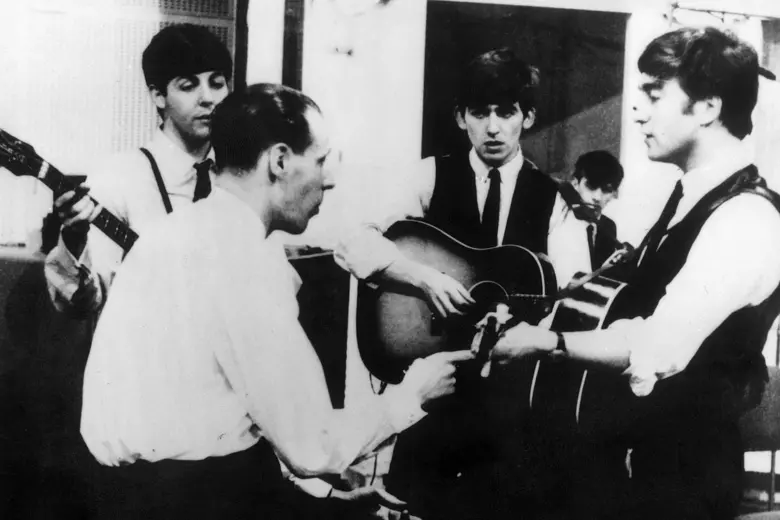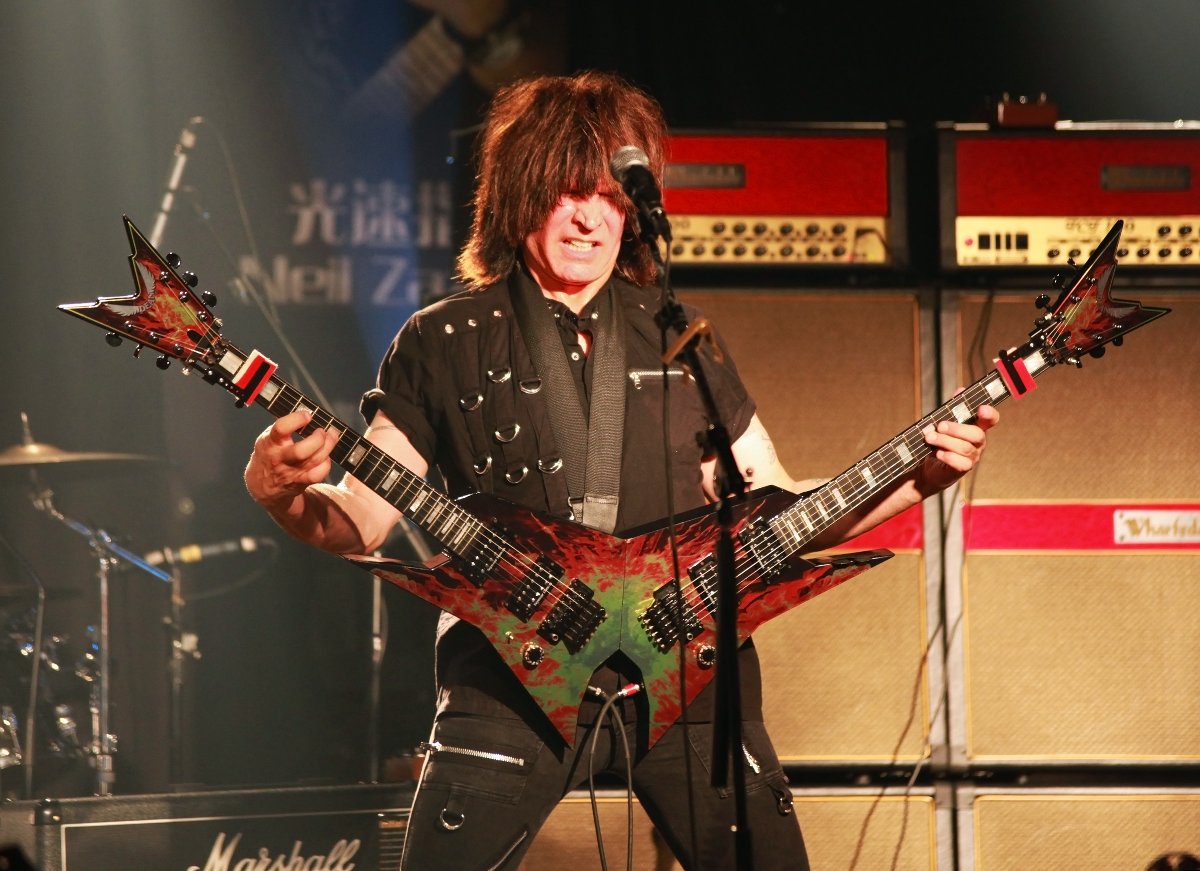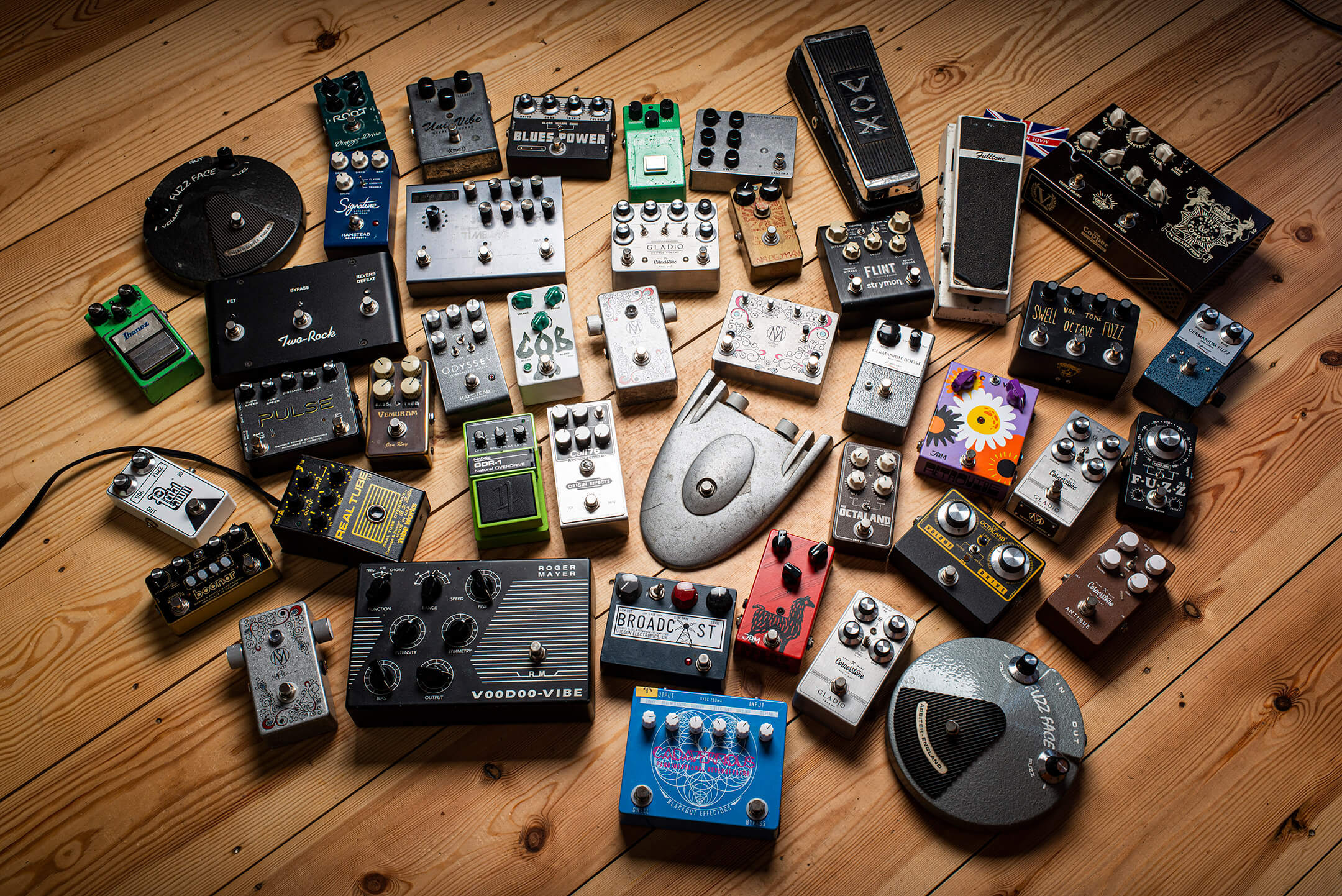Jeff Owens from Fender offers some cost-effective tips on how you can improve guitar tone, no matter what guitar you play. Check out his five tips below:
-
HAVE A WELL-ORGANIZED PEDAL BOARD
Effects pedals are a terrific way to develop your own tonal identity. One basic thing to remember while turning your pedal board into your sonic playground is that certain types of effects sound best when placed in a specific order. While there’s no rigidly “right” way to arrange your pedals, many frequency-shifting effects can disrupt the signal path, discolor the tone or cause clipping when placed in certain sequences with other kinds of effects. You should also know whether any of your pedals feature true-bypass switching, and how that feature affects your signal. When an effect pedal with true bypass is off (in bypass mode), the signal flows directly from the pedal’s input to its output without passing through any other internal circuitry, essentially acting as if the pedal wasn’t there in the first place.
True-bypass pedals are great for offsetting signal-chain noise and can help maintain the integrity of your original tone. However, they can also lessen treble frequencies if you’re dealing with many effects units and all the extra cable they require. If you have a larger pedal board with lots of true-bypass effects, consider putting a buffered pedal somewhere in the effects chain. It will compensate for signal loss and improve high-frequency response which will improve guitar tone.
-
PROPERLY INTONATE YOUR INSTRUMENT
Climate change, storage and even just everyday use can throw your instrument out of intonation. Making sure that your guitar is properly intonated is a fundamental way to improve guitar tone. If you’re uncomfortable making adjustments to your instrument, have a qualified service pro do it for you. As far as some rough basics on intonation, here are four useful steps:
- First, sound a note at the 12th fret.
- Then play the 12th-fret harmonic of the same note by lightly touching the string with your fretting hand just above the actual 12th fret wire and sounding the note with your picking hand.
- Compare the two pitches. If the fretted note is flatter than the harmonic, move the string’s bridge saddle very slightly forward (toward the center of the guitar) until the fretted and harmonic pitches match. If the fretted note is sharper than the harmonic, move the bridge saddle very slightly back (away from the center of the guitar) until the fretted and harmonic pitches match.
- Repeat for each string.
-
ADJUST THE PICKUP HEIGHT
Pickups are an important element of great tone. We can’t always change their character without changing them out entirely, but adjusting their height is a great way to fine-tune your guitar’s output level quickly and easily. All that’s required is the right kind of screwdriver, a ruler and some careful experimentation.
Generally speaking, the higher the pickup, the more output it would generate. You can also optimize your bass and treble levels depending on which side of the pickup you raise. Remember though, that moving your pickups too close to the strings can create nasty interference. Conversely, lowering pickups too much can prevent them from adequately sensing string vibration. Remember, you want to improve guitar tone, not impair.
-
KNOW YOUR STRINGS
Changing strings regularly is always a good way to keep your tone sounding fresh. But changing the type of strings you use can be a real and welcome game changer. Many players don’t realize how easily they can test-drive a totally new sound at a very minimal cost simply by changing the kind of strings they use.
If you’re used to playing with nickel-wound strings, which typically produce a rounder vintage-style tone, try a set of stainless steel strings for brighter sound with more prominent sustain. If your strings deteriorate quickly from grime and heavy use, try longer-lasting coated strings.
-
USE QUALITY CABLES
Cable shopping can be intimidating for those not armed with the right info. All those styles and prices can be confusing and a little daunting. “It’s just a cable,” you say. “Does it really make a difference?”
Simply put, yes. A well-designed cable can do wonders for your tone. In most cases it’s a matter of capacitance, or the manner in which your cable handles the signal produced by the pickups. Guitar cables are essentially long capacitors comprising two conductors separated by an insulator. Generally speaking, the longer the cable, the higher the capacitance, and the more high end you’ll lose.
Think about how much cable you use, especially if you have a lot of pedals. Why invest thousands in that high-end guitar only to have your tone muddied by an extra-long cable? Using a low-capacitance cable can help prevent signal loss and keep your high end intact. Consider the opposite, however, if your sound is too bright and you’d prefer a more prominent midrange.
Subscribe to our newsletter here – https://www.guitarexcellence.co.za/ne…
© Guitar Excellence 2016 All Rights Reserved





Comments (0)